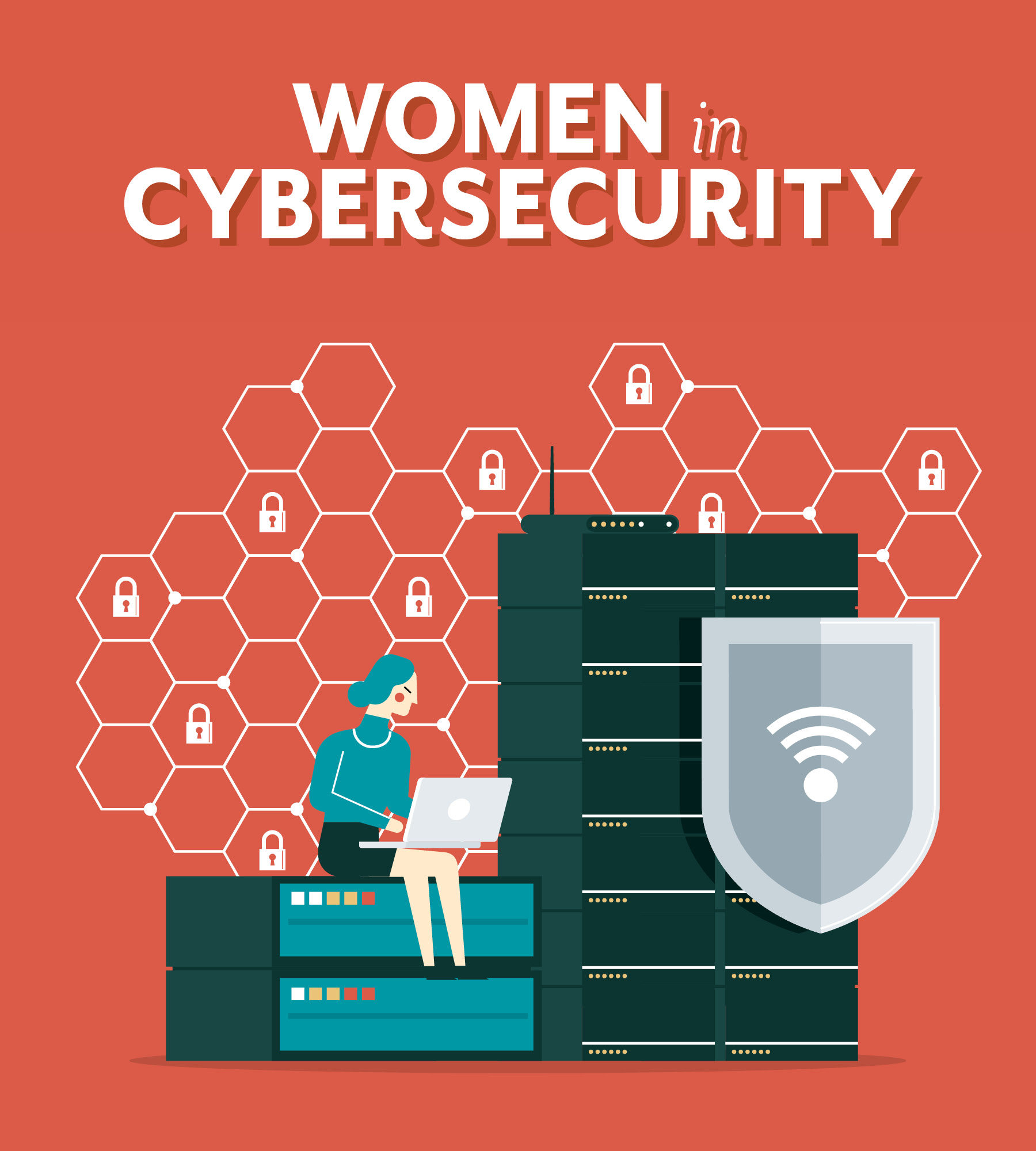Language
You can read the magazine in one of the following languages
All leaders and businesses have an important role to play in boosting female representation and increasing diversity in the cybersecurity industry. From the boardroom to the basement, from our high schools to universities and government initiatives, we can all contribute to encouraging and assisting more young girls and women to pursue a career in cybersecurity.
The Australian cybersecurity industry remains male-dominated, with males making up the bulk of students undertaking studies in cybersecurity. The industry average of female participation still sits at a low 17 percent.

There are many pathways and avenues for individuals to forge successful careers in cyber, encompassing technical and human-centric skills such as problem-solving, communication and empathy.
This is not just about jobs for the girls. It is about diversity of experience and thought. Undoubtedly there are highly skilled female cybercriminals, and they may think in different ways to their male counterparts. For those of us working on the defense side, we need the same diversity of thought to thwart our adversaries.
Appealing to women to consider careers in cybersecurity is also key to helping our nation overcome a significant labor shortage that is estimated to reach a shortfall of 30,000 workers by 2026. If we fail to attract a future pipeline of women to join the fight to protect our nation and fill rapidly expanding vacancies across all sectors, we will continue to see the escalation of cyberattacks at an alarming velocity.
Reflecting on my 25-year journey in cybersecurity on this International Women’s Day, the advice I would like to share with young women contemplating a career path or mature women contemplating a shift into cybersecurity is to not allow fear or uncertainty to influence their decisions. And for senior leaders in business to be open to training and nurturing future talent, not just focusing on hiring for existing skillsets.
I began my IT career in the early 1990s, working full-time in the industry while studying part-time. I stood as the sole female participant in my classes and the sole female professional in my IT domain for many years. I had to make more effort, go the extra mile and invest additional hours merely to receive the same recognition as my male peers.
Gaining acknowledgment and visibility in such a predominantly male environment was daunting. After a quarter-century in cybersecurity, and now in my mid-50s, I’ve witnessed considerable progress in the representation and opportunities for women in the field. However, there is still ample room for further advancement.

This is not just about jobs for the girls. It is about diversity of experience and thought.
Joining Tesserent nearly four years ago in my initial consulting role, I had that all too familiar impostor syndrome; even with all my cybersecurity experience and diligent efforts to refine my skills, I felt inadequate and ill-prepared on day one. Nevertheless, I embraced the challenge and within six months I was promoted from Senior Consultant to Principal Consultant and then, within a year, to Managing Consultant.
Today, as Partner of Advisory at Tesserent, I lead the advisory practice for the company in Australia and New Zealand, overseeing a sizable team of consultants, with 85 percent of my team identifying as male.
As a people leader, one notable observation I can share is the discrepancy in confidence between male and female team members when advocating for their worth. Men in my team tend to assertively present their case for deserving more, whereas many women tend to underestimate themselves and shy away from making their case.
Contrary to common belief, careers in cybersecurity aren’t solely technical. There are many pathways and avenues for individuals to forge successful careers in cyber, encompassing technical and human-centric skills such as problem-solving, communication and empathy.
As cybersecurity impacts everyone, diverse perspectives and experiences, especially those of women, are essential for effectively tackling challenges in this field. It’s not about gender quotas, but about women earning their place through competence and results.

Australia faces a significant shortage of cybersecurity professionals, and we need more organizations that are open to hiring and training individuals from diverse backgrounds.
My colleague Heidi Mejia is an inspirational example of a successful career pivot. Before the COVID-19-induced downturn, Heidi worked as a chef. During lockdown, she decided to pursue her long-standing interest in cybersecurity. Despite lacking prior experience, she secured a cybersecurity position because her determination and eagerness to learn outweighed her lack of experience, securing her important first start in the industry.
Australia faces a significant shortage of cybersecurity professionals, and we need more organizations that are open to hiring and training individuals from diverse backgrounds.

Louise Hanna
Contributor Collective Member
Louise Hanna holds a Master of Science in Internetworking and has more than 25 years of experience in the IT industry. She specializes in network security and management. As Partner of Advisory (Australia and New Zealand) at Tesserent, Louise leads her team in creating defensive strategies and providing innovative cybersecurity and risk management solutions through governance, risk analysis and compliance. Find out more at https://tesserent.com/
